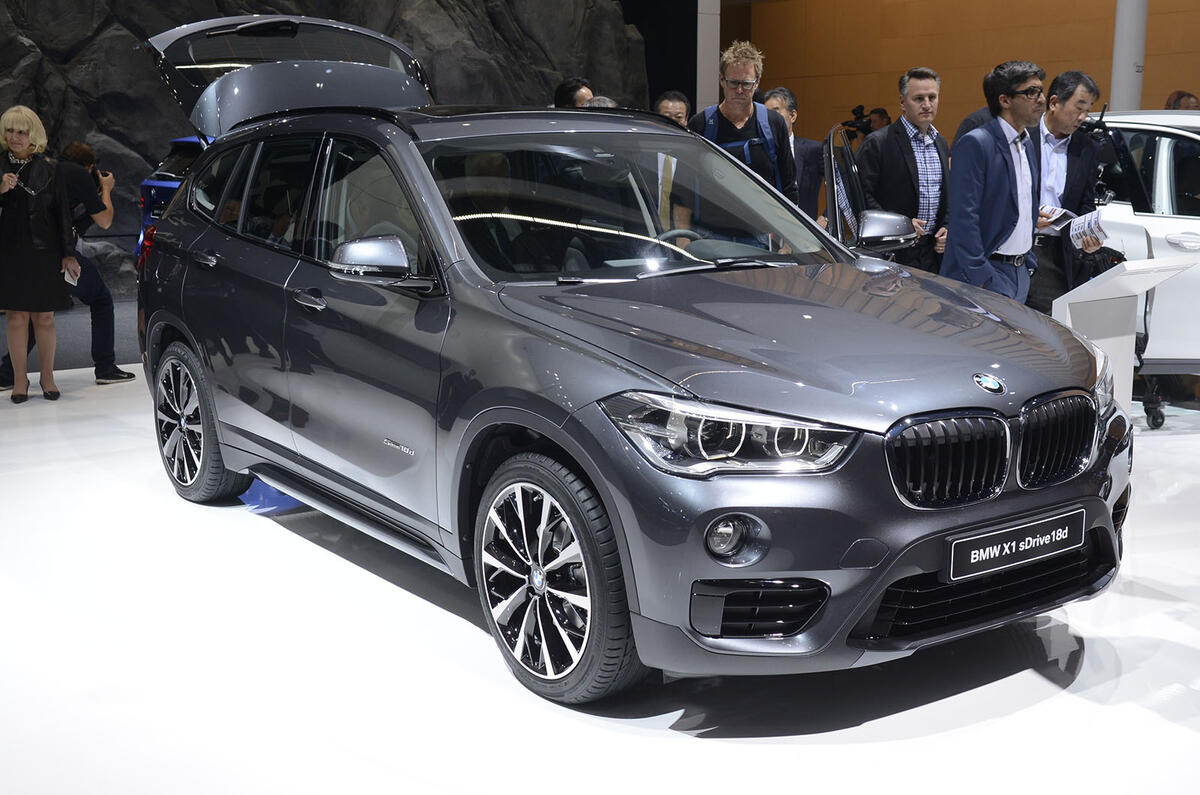The second-generation BMW X1 has made its public debut at the Frankfurt motor show.
The Audi Q3 rival is priced from £26,780 to £36,060, with the fastest engine - the xDrive20i - costing from £31,225, while the most frugal sDrive18d starts at £26,780.
The new model therefore has a slight price increase over the old X1, with the first-generation sDrive18d starting around £25,000 and rising to £35,000 for the top-of-the-line xDrive25d.
Set to go on sale in the UK this autumn, the SUV has been comprehensively re-engineered and gets BMW’s versatile UKL platform, as used on the 2 Series Active Tourer and Gran Tourer.
We finally get behind the wheel of the second generation BMW X1, read our thoughts here
The longitudinal engine layout of the first-generation X1 is replaced by a space-saving transverse layout, which helps to provide more interior space and improved safety credentials. Lower-end models also have front-wheel drive instead of the rear-wheel drive of the outgoing X1.
The new X1 takes on a more rugged appearance than that of the model it replaces. It has a bolder front end, angular headlights with LED daytime running lights, round foglights, a contoured bonnet, prominent front wheel arches, extra cladding on its sills and increased ground clearance.
The adoption of the UKL platform has allowed BMW’s design team to endow the X1 with an altered silhouette featuring a significantly shorter bonnet and longer roofline than the old X1. Retaining the five-door layout of old X1, it also receives larger rear door apertures for added ease of entry.
The revised X1 is 36mm shorter but 21mm wider and 53mm taller than its predecessor, at 4439mm long, 1821mm wide and 1598mm tall. A 90mm-longer wheelbase allows 37mm more knee room in the back, which increases by an additional 66mm with an optional tilting and sliding rear seat. Boot space has also increased by 85 litres to 505 litres, rising to 1550 litres with the rear seats folded. The back seats can be folded electrically from the rear of the boot at the touch of a button for the first time. As an option, the front passenger seat backrest can also be folded down.
While continuing to offer accommodation for up to five, the new BMW SUV has a slightly revised seating layout to take advantage of the packaging improvements brought by the switch to a transverse engine layout. The front seats are now 36mm higher than on the first-generation model, while the rear seats are set 64mm higher.


























































































































Join the debate
Add your comment
Hurray....
Looks much better than current X1...
Awful...but why?